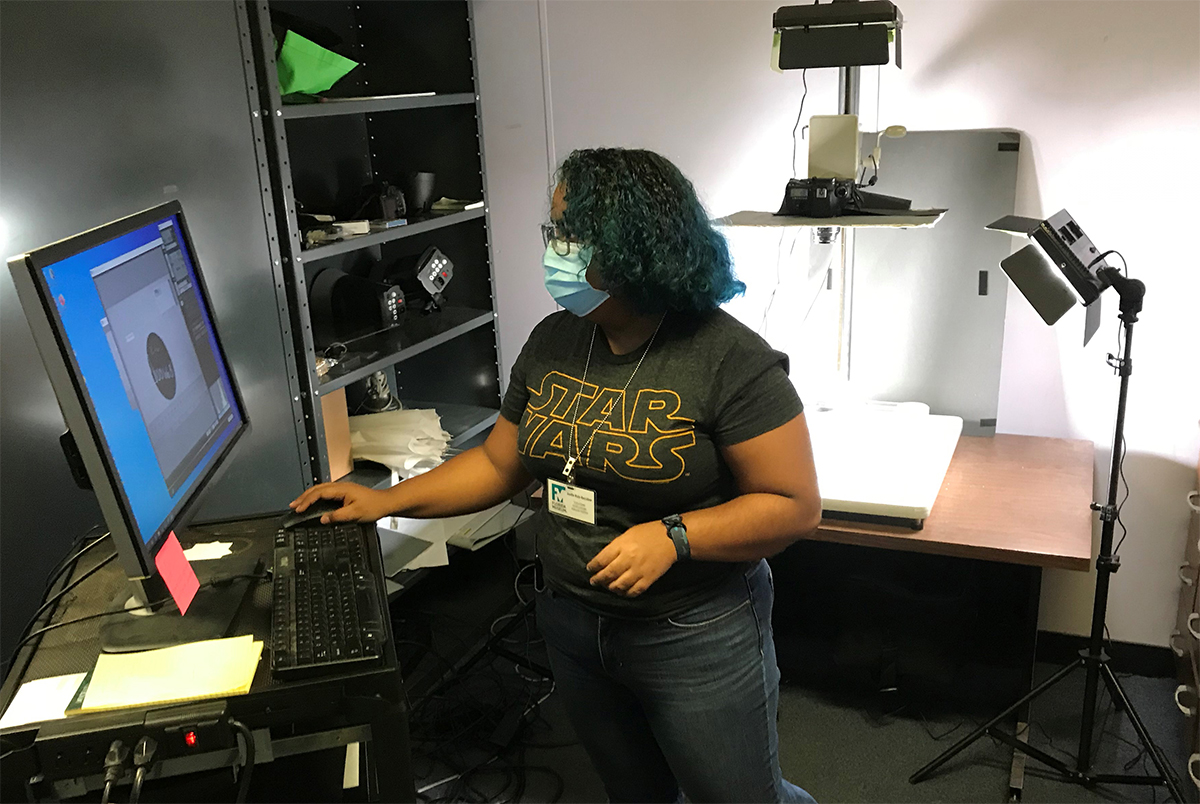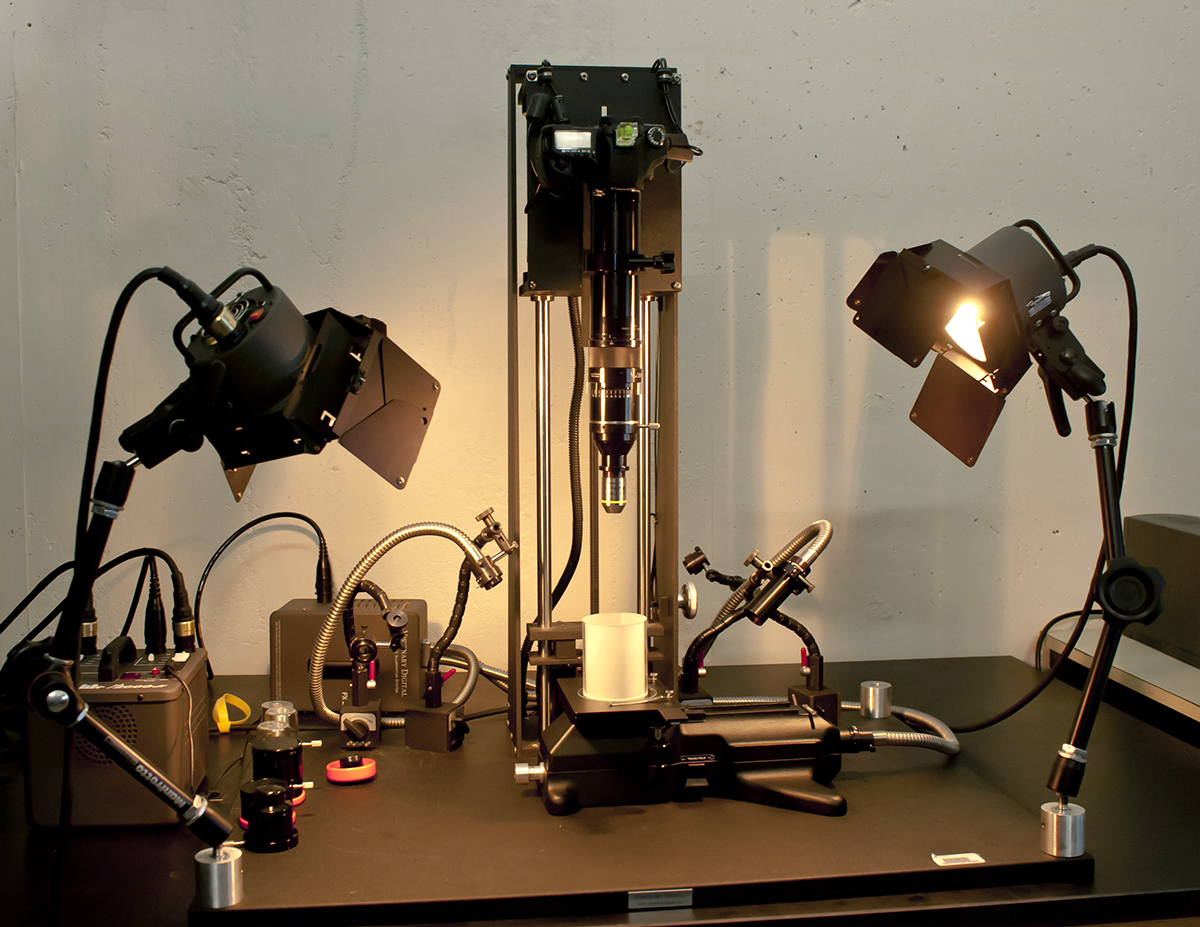Three photography workstations are available for imaging biological and cultural heritage collection objects listed below.
Fluid collection imaging

In order to avoid glare and the desiccation of specimen, fluid preserved collections are imaged in a photo tank (also known as a photo immersion tank or squeeze box). This setup is ideal for fluid collection objects 2 inches to a foot in length. The DSLR on a tripod is tethered to a computer with access to the natural history network. Manual focus stacking is optional with a license of Helicon Focus. Photo tanks are also available on loan for fieldwork (Note: will need to make one or two more before loaning out).
Non-fluid collection imaging
 Non-fluid collections are imaged with a copy stand workstation. This setup is ideal for collection objects 2 inches – 2 feet in length and allows for higher-throughput imaging. The DSLR is tethered to a computer for direct access to the natural history network. Automatic or manual focus stacking is optional with a license of Helicon Focus.
Non-fluid collections are imaged with a copy stand workstation. This setup is ideal for collection objects 2 inches – 2 feet in length and allows for higher-throughput imaging. The DSLR is tethered to a computer for direct access to the natural history network. Automatic or manual focus stacking is optional with a license of Helicon Focus.
Macro focus stacking
This workstation is comprised of an automated stacking system (Visionary Digital) with a custom-made microscope lens capable of magnification up to 20x.

This imaging system excels at imaging very small specimens where a large depth of field is needed to capture a larger distance in focus. It is capable of taking highly defined images for specimens as small as ca. 1 mm. The mirrorless camera system is tethered to a computer for direct access to the natural history network. Located in the mammalogy range.
Contact:
Zach Randall for training and scheduling